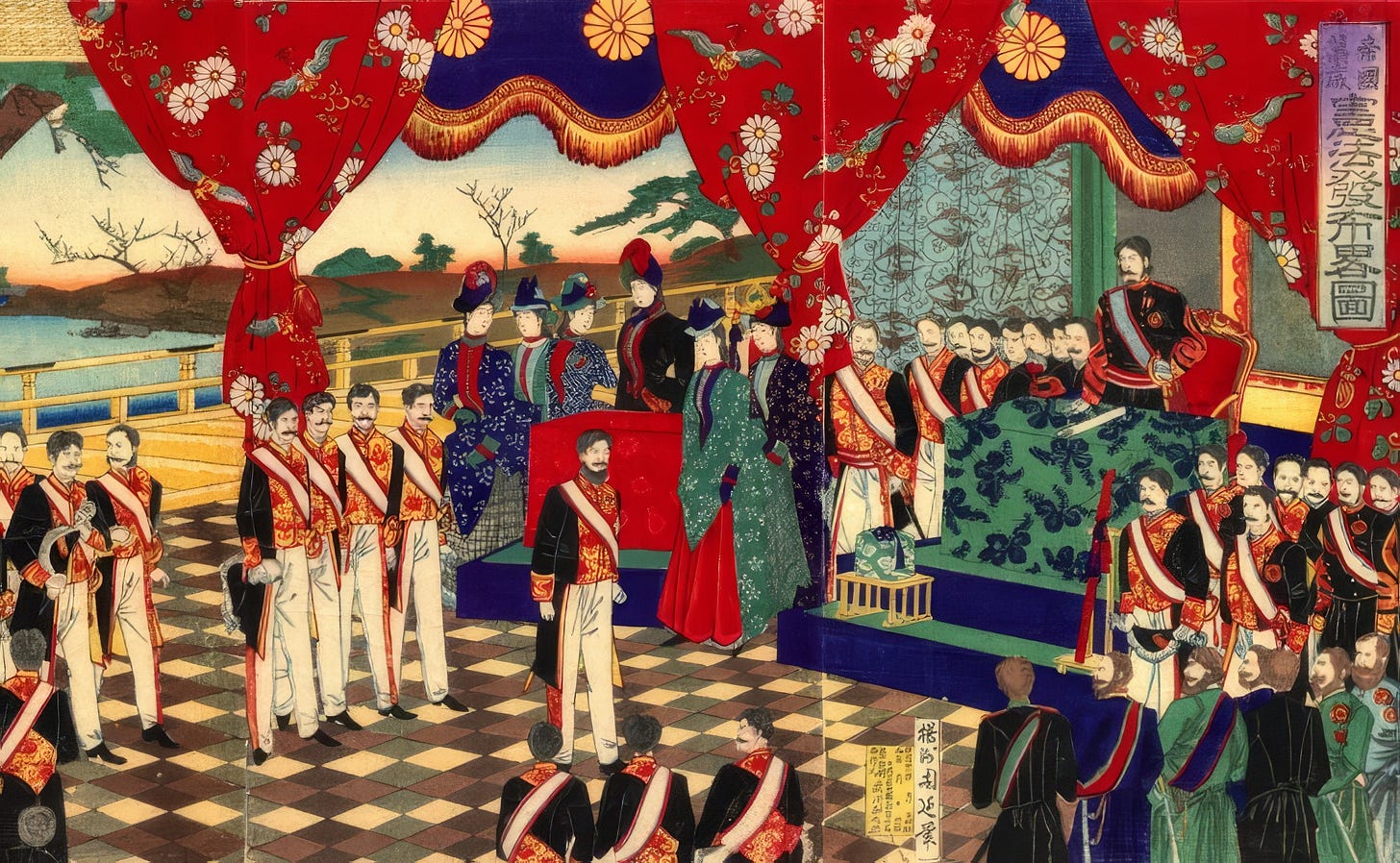Yamaguchi’s Political Dominance and the Legacy of Chōshū
From Meiji to Modern Politics Chōshū’s Enduring Influence on Japan’s Leadership
Modern Japan emerged after the Edo period (1603-1868), which spanned 265 years, and transitioned into the Meiji era (1868-1912) following the country’s opening to the world. The Edo period is often perceived as an era of “sakoku” (national isolation), but this policy was not in effect for the entire period. In fact, the sakoku policy lasted only 215 years, from 1639 to 1854.
The Meiji Restoration of 1868 marked the overthrow of the Tokugawa shogunate, which had enforced the sakoku policy and was often criticized as “feudalistic.” The Restoration ushered in a new era, but its essence was a military coup carried out with no hesitation to use terrorism. In Japan, this perspective has long been considered taboo, and instead, the Meiji Restoration has been glorified in school education as a revolutionary event that led to the creation of modern Japan. Why is this narrative so dominant?
To understand this, we must focus on a region that has played a leading role in shaping modern Japan: Yamaguchi Prefecture.
Formerly known as the Chōshū Domain, Yamaguchi Prefecture was the driving force behind the Meiji Restoration. While the prefecture may not seem significant in contemporary Japan, its influence stems from one key factor: it has produced a remarkably high number of prime ministers.
Since Hirobumi Itō, Japan’s first prime minister, a total of 65 individuals have held the position. The current prime minister, Shigeru Ishiba, is the 103rd to take office (serving since November 11, 2024). In Japanese politics, a prime minister’s place of origin is highly regarded (while bureaucrats are evaluated based on their educational background).
Out of these 65 prime ministers, Yamaguchi Prefecture claims the top spot with eight prime ministers, surpassing Tokyo, which has produced only five. Although this accounts for just 12% of the total, a deeper look at the duration of their tenure reveals the concentration of power.
As of January 15, 2025, the cumulative tenure of all Japanese prime ministers stands at 50,730 days. Remarkably, Yamaguchi-born prime ministers have held office for 15,569 days, or about 30% of the total. Just eight individuals from Yamaguchi have held the prime minister’s office for nearly a third of Japan’s modern history.
Here is an overview of these Yamaguchi-born prime ministers:
・Hirobumi Itō: Served four terms between December 22, 1885, and May 10, 1901, for a total of 2,720 days.
・Aritomo Yamagata: Served two terms between December 24, 1889, and October 19, 1900, for a total of 1,210 days.
・Taro Katsura: Served three terms between June 2, 1901, and February 20, 1913, for a total of 2,886 days.
・Masatake Terauchi: Served from October 9, 1916, to September 29, 1918, for a total of 721 days.
・Giichi Tanaka: Served from April 20, 1927, to July 2, 1929, for a total of 805 days.
・Nobusuke Kishi: Served from February 25, 1957, to July 19, 1960, for a total of 1,241 days.
・Eisaku Satō: Served from November 9, 1964, to July 7, 1972, for a total of 2,798 days.
・Shinzō Abe: Served four terms between September 26, 2006, and September 16, 2020, for a total of 3,188 days.
Looking at broader trends, Yamaguchi-born leaders dominated Japanese politics from the establishment of the new government until the 1920s. However, their influence waned during the 1930s and World War II, and further during the tumultuous period following Japan’s defeat in 1945 and the 1960 U.S.-Japan Security Treaty crisis.
The late 19th and early 20th centuries saw Japan’s rapid rise as a world power. Victories in the Sino-Japanese War (1894–1895) and the Russo-Japanese War (1904–1905), combined with economic growth fueled by World War I, solidified the political foundations of leaders from Chōshū. However, the 1920s brought dramatic change, with events such as the Great Kantō Earthquake (1923), the signing of the Japan-Soviet Basic Treaty (1925), and the Financial Panic of 1927 undermining their political and financial base.
By the 1930s, Japan entered a new phase with the Manchurian Incident (1931) and the road to World War II. Although Yamaguchi’s influence appeared diminished domestically, it was quietly being rebuilt in Manchukuo.
The Rise of Nobusuke Kishi
Nobusuke Kishi, who began his bureaucratic career in 1920, served as a key figure in Manchukuo from 1936 to 1939, effectively holding its highest administrative power. During his time in Manchukuo, Kishi amassed political capital through controversial means, including involvement in the opium trade.
Under Kishi’s leadership, Manchukuo cultivated opium poppies, smuggling large quantities via Persia to generate substantial profits. These funds supported the Kwantung Army, earning Kishi their trust and the nickname “The Night Emperor of Manchuria.”
Kishi’s rise continued during World War II, when he held various government positions, including Minister of Commerce and Industry. After Japan’s defeat, Kishi was detained as a Class A war criminal but was unexpectedly released in 1948 without indictment. This surprising turn of events was driven by the United States’ desire to prevent postwar Japan from turning socialist. Through CIA intervention, Kishi was freed and returned to politics as a staunch ally of the U.S.
In 1957, Kishi became prime minister, again under American influence. This marked the resurgence of Yamaguchi-born politicians in postwar Japan.
Postwar, three Yamaguchi-born individuals have served as prime ministers: Nobusuke Kishi, Eisaku Satō (Kishi’s younger brother), and Shinzō Abe (Kishi’s grandson). This lineage, rooted in Yamaguchi Prefecture (formerly Chōshū), has become a symbol of postwar Japan.



